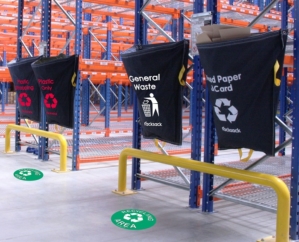-
BLACKOUT TECHNOLOGIES TARGETS TELEMATICS-INTEGRATED MOBILE DEVICE BLOCKING TO COMBAT SMARTPHONE DISTRACTION - 24 hours ago
-
Sparck Technologies awarded Royal designation - March 27, 2025
-
OpenADR Alliance announces first OpenADR 3.0 certified products with EVoke Systems, E.ON Energy and Universal Devices - March 25, 2025
-
Growing fulfilment and contract packer appoints new Managing Director - March 25, 2025
-
When is it time to invest in a WMS? Understanding the key trigger points - March 25, 2025
-
eCapital helps Vantage Recruitment on its journey to financial success - March 24, 2025
-
Hugo Beck Celebrates 70 Years of Packaging Innovation with Open House Events - March 20, 2025
-
PROLOG FULFILMENT SUPPORTS LUNA DAILY’S COMMITMENT TO BETTER BODY CARE FOR ALL WOMEN - March 19, 2025
-
Motion Ventures launches largest-ever maritime tech fund at $100M to meet the industry’s new pace of adoption - March 18, 2025
-
ITD GLOBAL APPOINTS GROUP CHIEF REVENUE OFFICER - March 17, 2025
By Jim Roberts, Commercial manager, Beaverswood,
The UK’s warehouse and supply chain sector generates considerable amounts of paper, cardboard, plastic and other waste materials – almost 38 million tonnes in 2017, according to reports. Moreover, if left unattended, all this waste material can quickly become a health and safety risk while impacting on operational performance.
That’s why improving waste management can save you time and money, ultimately delivering efficiencies and boosting your bottom line. Because of the sheer size and scale of most modern distribution centres and warehouses, it can sometimes be tricky to design and install a comprehensive packaging waste recycling system. However, there are some quick and simple solutions that are readily available and easy-to-use, and require no specialist technical expertise or knowledge to install.
So, what’s involved in keeping the workplace tidier and what should be considered when it comes to choosing the right products? The first thing to think about is the role of waste collection, segregation and management and how best it fits into operations. Consider also the available space and those areas where waste can be reduced and reused. Design is important, too – a good system should save you time and floor space.
To start with, ask yourself some fundamental questions – the answers will help you to arrive at the right solutions as part of your journey to becoming a net zero carbon waste sector operator:
- What parts of your operation create the most waste i.e., the key workflows?
- How does waste damage/impact your operations?
- Can any waste be recycled better to produce sustainable energy?
- What type of waste collection systems will best suit your needs? (It might not be necessary to have the same type across the entire warehouse to maximum efficiencies)
- Identify the volume of waste in process and packaging areas
- The number of employees, the type of work undertaken and the volume of waste will help you to work out how many waste collection units are required.
- How far do pickers and other frontline staff have to walk to dispose of their waste?
- What signage and markings are needed to support your recycling initiatives? The key to success is simple, clear and unequivocal signage that will contribute to smoother and more effective operations
Think about industry best practice, which revolves around the specification of any type of waste collection, segregation and management system. Legislation should also be considered and this includes Packaging Waste Regulations that are designed to limit the amount of packaging going to landfill ‘…business using packaging (“producers”) take responsibility for any environmental impact. They then pay a fair proportion towards the costs of recovery and recycling’.
Making systems easy-to-use is an important constituent of any successful recycling solution. They should be simple to implement and use to avoid overcomplicating things, which could lead to non-compliance and the reiteration of bad habits. Neither does effective recycling have to cost the earth in terms of time and money.
When choosing the right product supplier, it’s important that they must offer effective products with performance characteristics that make them suitable for the required application. Any responsible supplier will advise on performance requirements and best practice when choosing ready-to-use products. This might seem obvious, but it’s not uncommon for some products to look good on paper only to be a disappointment in reality.
Ultimately, you will want to work with a fast and responsive supplier who will recommend appropriate products. For example, simple and effective collection and segregation of waste in distribution centres and warehouses is provided with the racksack range from Beaverswood. Manufactured from hard wearing woven polyester to withstand the rigours of the industrial environment, racksack hangs neatly off the ends of shelving and racking systems to enable operators to achieve significant improvements in the segregation and management of waste materials as staff pick and fulfil delivery orders in 24/7 operations. Depending on warehouse size, a trolley cage racksack could be a viable option for workers who need to walk a considerable distance to reach the waste collection point.
There is always room for improvement when it comes to tackling packaging waste in the warehouse environment and more effective management can only be good for business and the environment. More at www.beaverswood.co.uk































